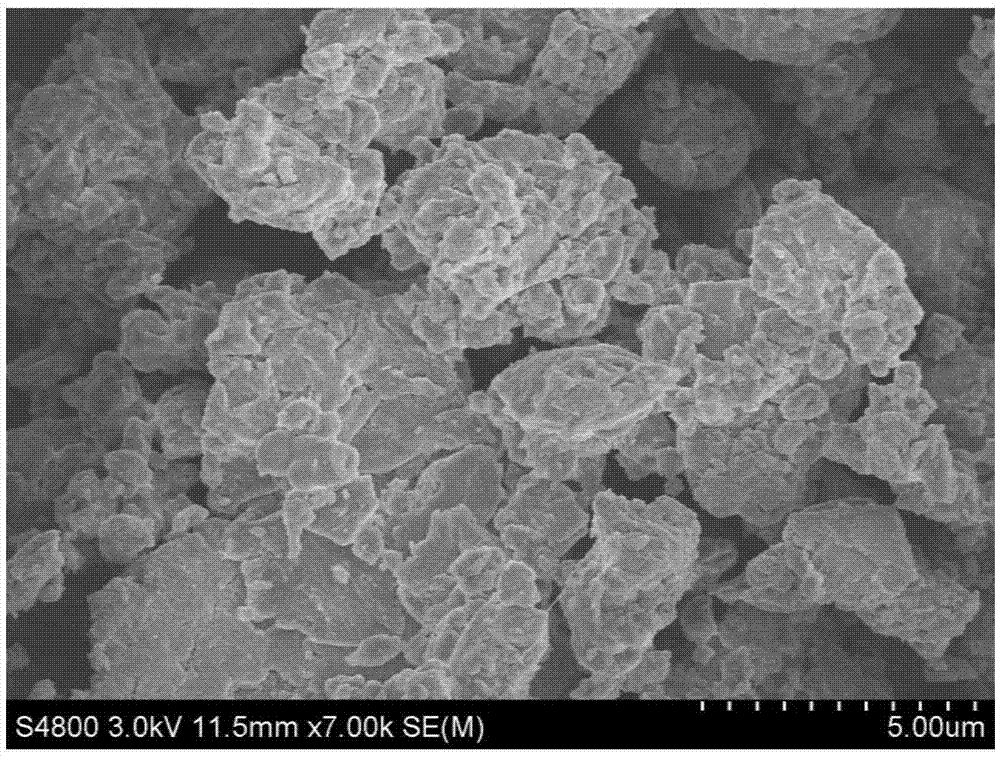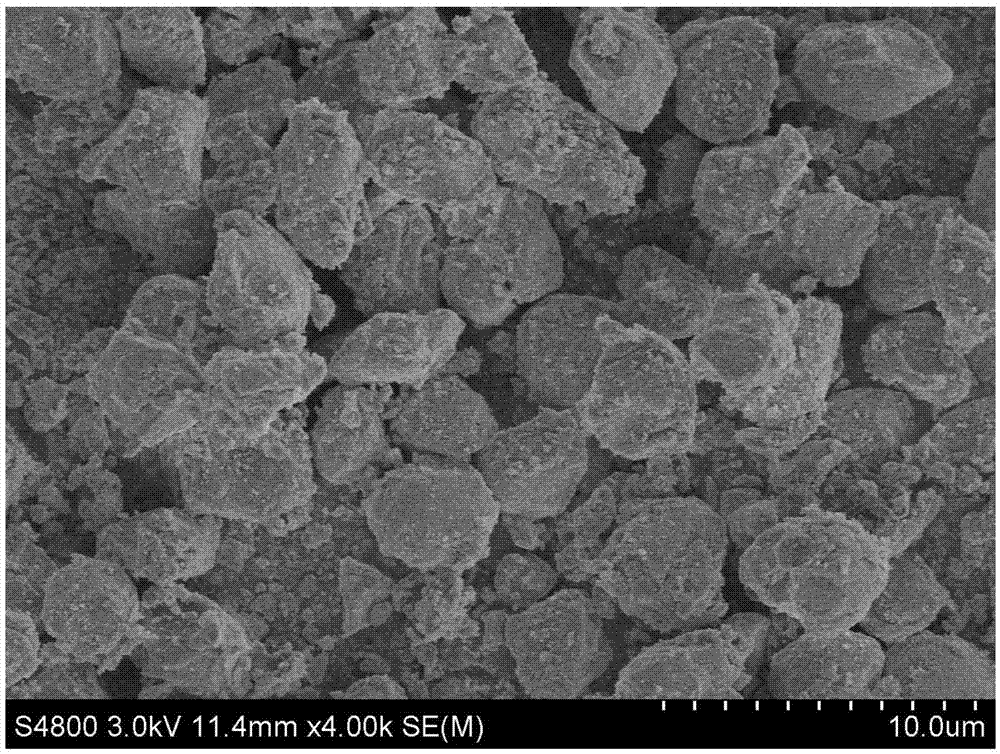Preparation method of flower-like TiO2/graphene photocatalyst and application thereof
A photocatalyst and graphene technology, applied in the fields of nanomaterials and environmental science, can solve the problems of poor biodegradability, low degradation rate, secondary pollution, etc., and achieve the effects of low cost, promotion of oxidation process, and improvement of degradation efficiency.
- Summary
- Abstract
- Description
- Claims
- Application Information
AI Technical Summary
Problems solved by technology
Method used
Image
Examples
Embodiment 1
[0035] Step 1: Disperse 0.02 g of graphene oxide powder in 5 mL of deionized water, and ultrasonically treat the mixture for 5-10 min to make the dispersion uniform.
[0036] Step 2: 10 mL of [Bpy]Br with a purity of 0.99 was added to the above mixture, and the mixture was sonicated for 5-10 minutes to make the dispersion uniform.
[0037] Step 3: Add 5mL0.5mol / LTiCl 4 solution, ultrasonically treat the mixture for 5-10 min to make the dispersion uniform.
[0038] Step 4: The mixed liquid obtained in Step 3 is subjected to microwave heating treatment for 30-60 min, the heating power is 120-130 W, and the microwave heating frequency is 6 GHz.
[0039] Step 5: The product was naturally cooled and then centrifuged, washed several times with deionized water and absolute ethanol, and dried in vacuum at 80° C. for 6 hours to obtain the final product.
[0040] Step 6: Finally get the remaining sodium pentachlorophenate crystals on the grapes and add water to dissolve to 100mL mass ...
Embodiment 2
[0045] The preparation method in this example is the same as that in Example 1, the only difference is that [Bpy]Br is not added in step 2 of this example, and the same amount of water is added instead, and other conditions remain unchanged.
[0046] see figure 2 , for the TiO prepared in this example 2 / SEM images of graphene catalysts. TiO at this time 2 It is a mixed structure of tiny particles and flowers, so it can be seen that the ionic liquid has the function of regulating TiO in this invention. 2 The role of morphology, participation of TiO as a shape control agent 2 generation process. TiO can be seen in the subsequent photodegradation experiment of sodium pentachlorophenate 2 The change of the morphology of the photocatalyst greatly affects the effect of photocatalysis.
[0047] Get the TiO that 500mg this embodiment prepares 2 / Graphene catalyst carries out photocatalytic degradation sodium pentachlorophenate test in photochemical reaction instrument, record...
Embodiment 3
[0049] The preparation method in this example is the same as in Example 1, the only difference is that [Bpy]Br is not added in step 2 of this example, and an equivalent amount of 1-butyl-3-methylimidazolium hexafluorophosphate is added instead Ionic liquid, the rest of the conditions remain unchanged.
[0050] see image 3 , for the TiO prepared in this example 2 / SEM images of graphene catalysts. TiO at this time 2 It is a mixed structure of ellipsoid and polyhedron, which shows that different ionic liquids in TiO 2 There are different mechanism effects and control results on the morphology control. TiO can be seen in the subsequent photodegradation experiment of sodium pentachlorophenate 2 The slight change in the morphology of the catalyst also changes its photocatalytic effect.
[0051] Get the TiO that 500mg this embodiment prepares 2 The photocatalytic degradation test of sodium pentachlorophenate was carried out by the graphene catalyst in the photochemical react...
PUM
 Login to View More
Login to View More Abstract
Description
Claims
Application Information
 Login to View More
Login to View More - R&D
- Intellectual Property
- Life Sciences
- Materials
- Tech Scout
- Unparalleled Data Quality
- Higher Quality Content
- 60% Fewer Hallucinations
Browse by: Latest US Patents, China's latest patents, Technical Efficacy Thesaurus, Application Domain, Technology Topic, Popular Technical Reports.
© 2025 PatSnap. All rights reserved.Legal|Privacy policy|Modern Slavery Act Transparency Statement|Sitemap|About US| Contact US: help@patsnap.com



